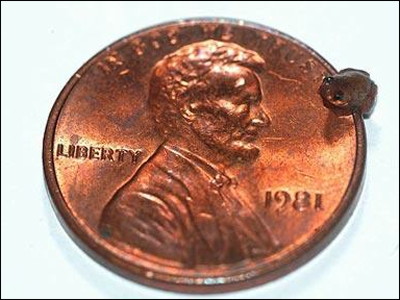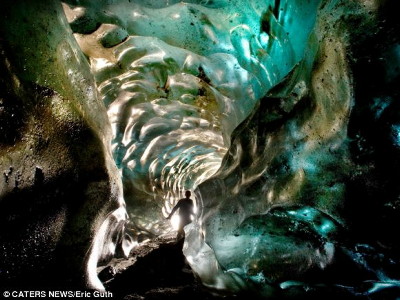Flower diameter is only 2 mm, the world's smallest run is found in Ecuador
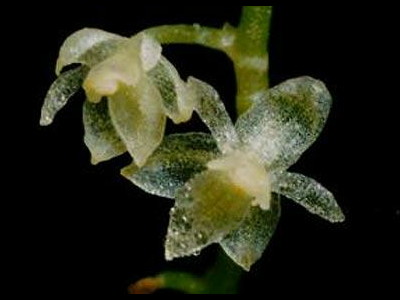
Photo by Lou Jost
This transparent petalrunIs an American botanist Dr. Lou JostEcuadorThe diameter of the flower is 2.1 mm at the maximum, the petal thickness is only one cell.
Even with the naked eye it may not notice that it is a flower, but unlike the enlargement it undoubtedly features the characteristics of orchid flowers. Dr. Jost seems to be able to find it by a fortunate coincidence because it is small enough to nod up what was not discovered to date.
Details are as below.New Species of Orchid is World's Smallest: Living the Scientific Life (Scientist, Interrupted)
Ecominga Cerro Candelaria Reserve
It was discovered in 1912 that it was believed to be the world's smallest run until nowPlatystele jungermannioidesThe diameter of the flower is 2.5 mm. It is distributed in Mexico, Costa Rica, Guatemala, Panama. The flowers discovered this time in Ecuador also in South America are also the same orchids as Platystele jungermannioidesPlatysteleGenus species. That being 2.1 mm in diameter, it was the first time in 97 years that "the world's smallest run" was discovered.
Platystele jungermannioides which had been thought to be the world's smallest run until now
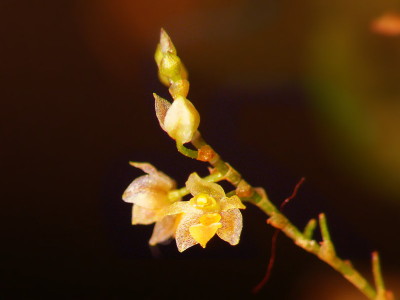
Photo by Daniel Jimenez
The world's smallest run is Ecuador'sEcoMinga FoundationAnd the BritishWorld Land TrustJointly established nature reserveCerro Candelaria ReserveSo, it was discovered by chance what was missing in the roots of other runs.
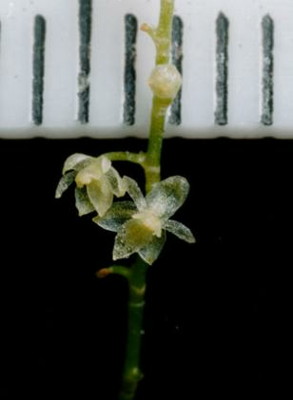
Photo by Lou Jost
Since the petals have only one cell thickness, the other side can be seen through.
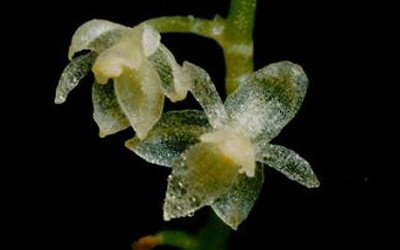
Photo by Lou Jost
Dr. Lou Jost, an American botanist who is one co-founder of the EcoMinga Foundation and a former physicist and now acting as an environmental protection researcher, has identified 60 species of new species in the past 10 years and new species of other plants It is a leading expert of run research discovered 10 species. While collecting a small run and raising it in a greenhouse, he seems to have noticed a smaller run that was missing in the roots a few months after collection.
"In order to identify the type of run, it is often best to observe flowers, and if you look at the flower you can tell if it is a new species that is not known before," Dr. Jost says.

Cerro Candelaria nature reserve is located in the Andes mountain rangeSan Gai National ParkAnd the Amazon River BasinLlanganatesDuring the national park, it is located in the area where vegetation changes due to altitude, mainlyCloud forestWhenParamo(Typical grassland areas seen in high mountains between 3800 and 5000 m above sea level)It consists of. Endangered speciesYamabakuAndEyeglasses·OcelotIt is also a habitat of animals such as.
A zone where vegetation changes from forest to grassland.
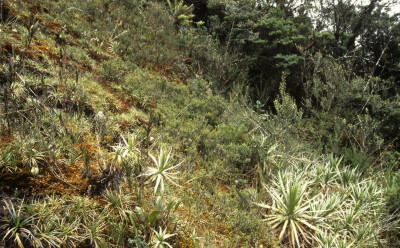
Cerro Candelaria nature reserve with 2600 hectares of area and altitude of 1800 to 3800 m. Highland runs withstand temperatures that are below freezing temperatures every night.
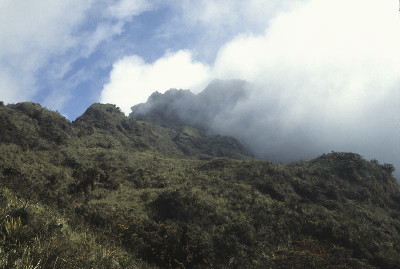
The Cerro Candelaria region of Ecuador is a treasure house of rare plants of Orchidaceae, and it was thought that there are only six species so farTeagueiaIt turned out that the genus orchids had evolved their own evolution in this region. In a narrow range of only 20 km × 20 km, 28 to 30 species of Teagueia genus were discovered by Dr. Jost et al.
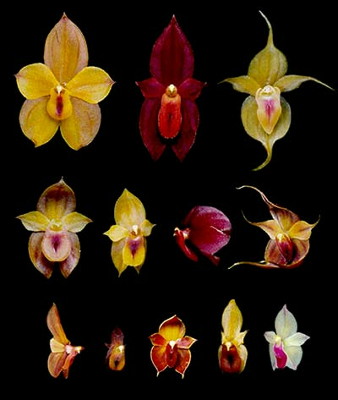
In the Cerro Candelaria nature reserve, one new species of frog and one tree have been discovered so far, they are also known as British botanists and zoologists and moderators of natural programsSir David AttenboroughIt is scheduled to be named after.
Related Posts:
in Science, Posted by darkhorse_log
